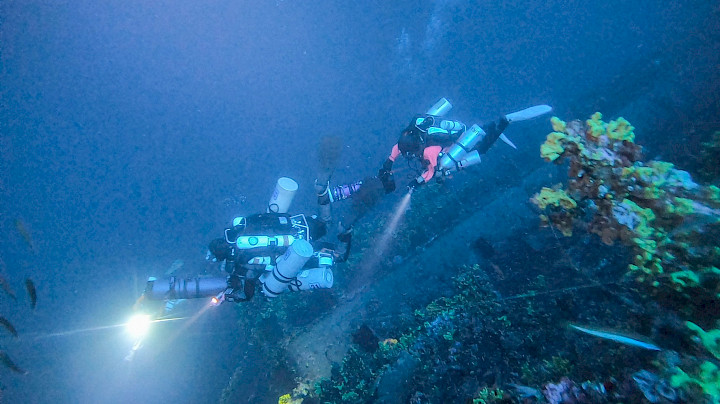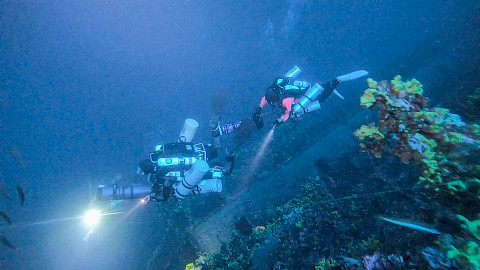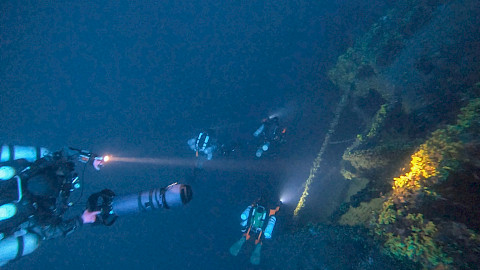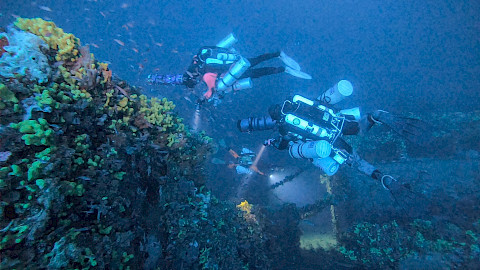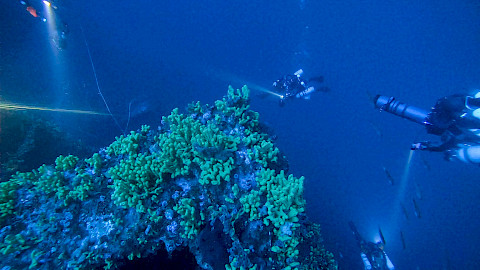HMHS Britannic
with the proper training and gear is a lot easyer and safer than was 10 years ago!! Clear progres of the Tech Diving Comunity
HMHS BRITANNIC by Nikolaos Giannoulakis
Standing on the land of Kea, looking into the agean sea the big cargo ships are passing by in different directions to multiple destinations and taking my self in a moment to the past!
In times that the world was very different of the world we know now…
In times where ships were sailing in these waters in order to serve the needs of the First World War and nothing was safe, nothing was for granted, anything could change in a single moment even for a float hospital like the HMHS BRITANNIC the brother of the most famous of all wrecks HMHS TITANIC!
The 21st of November 1916, is the date that HMHS BRITANNIC, the largest hospital ship in the world (until that time) became a shipwreck.. The largest ship lost during the First World War.
No one looked for this historic wreck until 1975 when it was discovered by Jacques Cousteau and his crew, and only that time we were able to have the first images of the 272m long shipwreck.
Now the Britannic shipwreck is full of marine life and divers were able to put their dive lights and illuminate parts of her again!
Since then, diving equipment and diver’s training developments have had significant progress.
A little more than maybe 100 divers, had the privilege to visit and dive to this wreck in a max depth of 120 meters or almost 400ft.
For sure, it is not shallow and the diving conditions can be a bit demanding and really difficult.
This dive is, definitely, a Hypoxic technical extended range dive.
In the past, open circuit certified divers have completed that dive successfully, but nowadays it makes more sense to do this dive only on Ccr (rebreathers)
Because great depth dives require long decompression time (between 2 to 3 hours) depending on the bottom time, it is very important that everyone involved need to be prepared for long and tiring days. Top and bottom teams!
Is it worth all the afford for this specific dive?
First fact a diver will realize when they see the wreck on the down line approx. at 80m of depth, is the size of this ship! Is just enormous to the level that if you end up in the middle, maybe you won’t be able to easily understand where the stern and the bow are. Then if it’s not a DPV, scooter dive, depending on the current, may not be possible to see much of the massive bridge and the approximately 40m wide deck fully holding almost everything that was on the ship at that time.
For sure is better with a DPV(scooter) and definitely the CCR divers will have a huge advantage in bottom time allowing the access to the stern and see the famous 3 propellers in depth of 105-115m, exactly the same as Titanic.
Continuing the scootering back to the top of the wreck, we will see the Jacque-Yves Cousteau's bronze plate.
At that point, in good visibility, it is possible to almost see the broken bow coming out like a shadow from this amazing blue color of the Aegean sea. After that is probably time to start the ascent!
So the answer is 1000 times worthy!!!
Yes, in an incredible unique, amazing dive, worth every minute of the long deco and travel and all the expenses...but only under the correct conditions!!!
The divers must be well prepared for 100+m depth, 2-3 hours of decompression in strong current, great team awareness and experience on underwater orientation, are must have values!
Everything sounds logical so far but here is where the human factor is kicking in....
THE MYTHICAL BRITANNIC is described like the mountain EVEREST of diving!!
Many divers dream of doing this truly incredible dive. Divers, all over the world, invest a lot of time and money in training, diving gear and diving experience but sometimes we, humans, are in rush to get what we call a “life time experience” and we might make the wrong decisions!
Dives like this, if everything goes as planned, are perhaps physically demanding but technically not that complicated.
The big problem is when something doesn’t go according to the plan.
Then, there is a domino of events that can lead to really problematic situations. The only way to avoid this scenario is to be well prepared in terms of training, equipped configuration, experience in at least similar conditions and a good surface support team!
Then you are ready for HMHS BRITANNIC, THE EVEREST OF DIVING!

